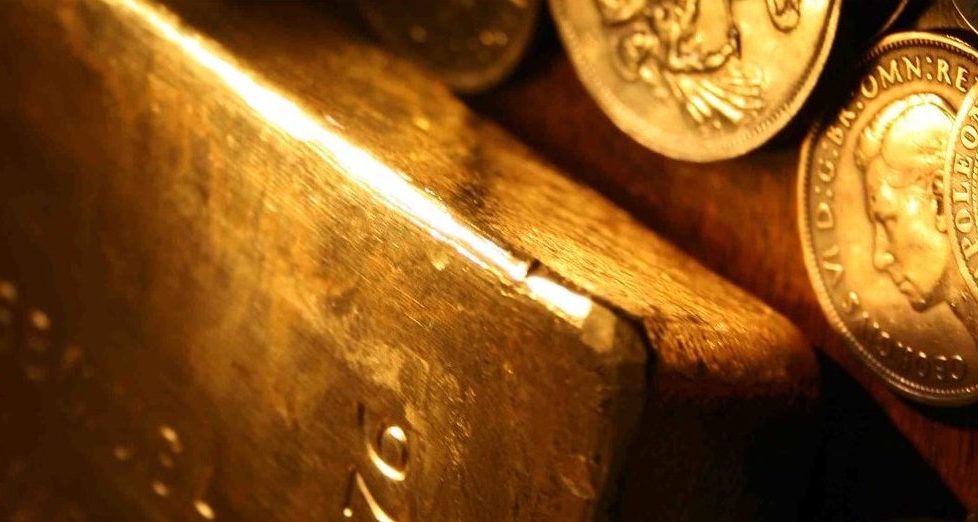BRICS Alliance is All About Gold. It should be The Gold Bricks Alliance.

Today, in place of my usual Monday column on economics and investing, I’d like to briefly delve into some of the implications of the recently announced expansion of the BRICS trading alliance.
The acronym “BRIC” was first coined in 2001 by Terence James O’Neill — then of Goldman Sachs — in describing the fast-growing economies that would dominate the global economy by 2050: Brazil, Russia, India, and China. Over time, South Africa was added to the acronym, making it BRICS. Oddly, O’Neill’s term of art eventually morphed into an actual multi-national organization. In recent years, primarily under mainland Chinese leadership, the BRICS group has worked on developing trade agreements and credit-clearing circles.
I believe that many western economic and political analysts are missing the “Big Picture” of BRICS and the planned BRICS+ expansion. The mass media is presently abuzz about the combined oil production and population figures of the BRICS bloc. Yes, it is more than half of the world’s population. And yes, they collectively produce a quite substantial amount of oil. But what they are missing is that the BRICS alliance is all about gold. In my estimation, it might as well be called The Gold Bricks Alliance. To wit:
Brazil is the 14th biggest gold producer in the world, with about 60 metric tonnes produced annually. Brazil has a 129.6 metric tonne gold reserve.
Russia is the 3rd biggest gold producer in the world, with about 320 metric tonnes produced annually. Russia has a 2,330 metric tonne gold reserve.
India is a major gold consumer, and still reveres gold as a store of wealth and there it is a traditional wedding gift. Indian families buy so much gold annually that the weather during the Indian wedding season is considered a key determiner in the global price of gold. It is estimated that the amount of physical gold in the hands of Indian families (privately held not holdings by the Reserve Bank of India) amount to an enormous 25,000+ metric tonnes of gold. That is four times as much as that stored at Fort Knox! The Reserve Bank of India (RBI) has gold reserves of 794.64 metric tonnes. Presently, India produces only about 1.6 metric tonnes of gold annually. However, it has been reported that India’s gold mine production could rise to 20 tonnes per year.
China is both a major gold producer and consumer. Mainland China is the world’s #1 gold producer, with about 330 metric tonnes produced annually. Gold demand in China for electronics, manufacturing, jewelry, and bullion is staggering — leaving China a net importer of gold each year. It is noteworthy that in the past year, China has quietly bought up an additional 45.1 tonnes of gold, to add to their national reserve, bringing it to 2,113 tonnes — nearly as big as Russia’s.
South Africa is the 8th biggest gold producer in the world, with about 110 metric tonnes produced annually. The nation has a 125 metric tonne gold reserve.
The six countries that were recently announced to be joining BRICS all have close ties to and an affinity toward gold:
Argentina is beset by inflation and is desperately seeking a more sound currency. Argentina has a 61.7 metric tonne gold reserve.
Egypt has sought gold since ancient times. Egypt’s central bank has a 126 metric tonne gold reserve.
Ethiopia reportedly holds only modest gold reserves, but the country could be sitting on one of world’s great untapped gold deposits.
Iran has major gold deposits and has a 250 metric tonne national gold reserve.
Saudi Arabia is a major gold consumer and its national bank has a 323 metric tonne gold reserve, as a long-term hedge against eventual oilfield depletion. Additionally, members of the Saudi royal family privately hold an undisclosed hoard of gold, conservatively estimated as “hundreds of tonnes.”
United Arab Emirates has a 74.4-metric tonne gold reserve. The nation’s most populous city, Dubai, is a major hub for the global gold trade.
As many as 40 more countries have expressed an interest in joining BRICS. These include: Algeria, Bolivia, Indonesia, Ethiopia, Cuba, the Democratic Republic of Congo (DRC), the Comoros Islands, Gabon, and Kazakhstan. Not surprisingly, several of those nations are active in the global gold trade. Conspicuously absent are any countries in the Anglo-European alliance. Of the 40 “would-be” nations, gold trading is a common theme.
Gold production in Kazakhstan amounted to an estimated 120 metric tonnes in 2022. Indonesia produces an estimated 66 metric tonnes produced annually. Bolivia produces 4.5 tonnes of gold per year. And the DRC has just half a metric tonne of annual production officially reported but much more privately produced in informal hand-dug gold mines, and smuggled out of the country to avoid taxation. Just how much is anyone’s guess. (In the DRC, cobalt, diamonds, and gold are all produced in chaotic muddy landscapes that can only be described as hellish, with copious slave labor and child labor.)
Looking at those aforementioned numbers leads me to ask some questions:
And lastly, I have another question: Why is the mainstream media largely ignoring the gold connection? I did see one good piece last month about BRICS and gold by Nathan Lewis in Forbes, but most of the mainstream press seems ignorant of just how important gold is to the BRICS members. Perhaps the very concept of a gold-backed currency has become anathema to the ruling elites in Western nations. First World countries are addicted to debt, and they issue only debt-based fiat currencies. The prospect of a freely-redeemable gold-backed BRICS currency is the Great Unspoken, in the dominant mainstream press. – JWR
